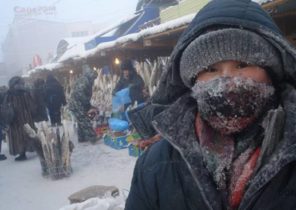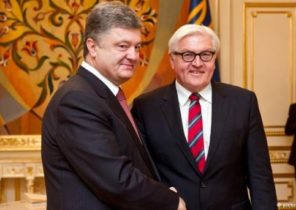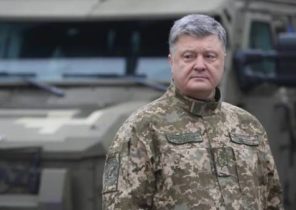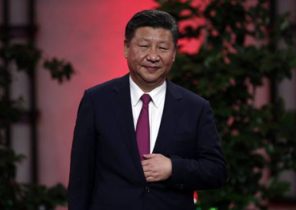
Atomic icebreaker “Lenin” — beauty and pride of the great game the Soviet Union in the Arctic is anchored on eternal Parking in these icy waters. This relic of the cold war is now a Museum.
But almost thirty years after the icebreaker “Lenin” was decommissioned and became a tourist attraction, Russia has started a campaign in the Arctic and is building a new nuclear-powered icebreakers.
This is done through active activities aimed at strengthening Moscow’s positions in the far North, as it claims to supremacy, traditionally competing with Canada, USA and Norway, and also with a new competitor — China.
According to interviews with officials and military analysts, as well as review of government documents, strengthen the presence of Russia is the largest since the collapse of the USSR in 1991 and in some areas of Moscow will provide more powerful military potential than those military capabilities, which once had the Soviet Union.
This expansion involves far-reaching financial and geopolitical implications. Hydrocarbon reserves in the Arctic, according to estimates, more than in Saudi Arabia, and Moscow claims the right to these areas, placing a significant military force.
“History repeats itself”, — said recently the group of tourists Vladimir Blinov, the guide of the Museum on Board the icebreaker “Lenin”, named in honour of Communist revolutionary Vladimir Lenin.
 © RIA Novosti, Vladimir Astapkovich | go to photobacteria to the North pole
© RIA Novosti, Vladimir Astapkovich | go to photobacteria to the North pole
“Then (in the 1950s) was the height of the cold war, and the United States in some areas was in the lead. But we beat the Americans and built the world’s first nuclear ship”Lenin”]. Today — a similar situation”.
Under President Vladimir Putin, Moscow has decided to reconstruct in the Arctic Islands abandoned by the military, aviation and radar bases the Soviet era and build a new one as it continues to claim Arctic territory with a total area of approximately 1295 square kilometers.
She regularly publishes photographs that Russian troops in white camouflage and with guns in their hands rushing in reindeer during military exercises.
The oil and gas reserves in the Arctic, according to estimates by the U.S. geological survey, are oil equivalent of 412 billion barrels, or about 22% of the world’s undiscovered oil and gas.
Due to low oil prices and Western sanctions imposed in connection with the actions of Moscow in Ukraine, new projects on the Arctic shelf until conserved, but the Kremlin has long.
Russia is building three nuclear-powered icebreakers, including the world’s largest, to strengthen your fleet, numbering about 40 icebreakers, six of which are nuclear. No other country has no nuclear icebreaker fleet, which is used to clear sea lanes for military and civil courts.
The Russian Northern fleet, based in the icy waters of the Kola Bay near Murmansk, will also get its first own icebreaker and two equipped with cruise missiles patrol ships, able to move in the ice
“If [former Soviet leader Mikhail] Gorbachev and [former President Boris] Yeltsin, our Arctic border area was exposed, — the member of Russian geographical society Professor Pavel Makarevich. — Now they restore.”
This deployment of forces and means, which resembles actions in Crimea and the Kaliningrad region, has not gone unnoticed in Washington. The Minister of defence of the USA James Mattis (James Mattis) said this month during hearings on the occasion of the inauguration of that “not in our interest to leave any part of the world” to someone else.
According to Senator Dan Sullivan (Dan Sullivan), Mattis in a separate letter, called the actions of Moscow in the Arctic “aggressive steps” and promised to consider as a priority the formulation of U.S. strategy.
This represents a potential dilemma for President Donald trump, who rather intends to restore us-Russian relations and to cooperate with Moscow in Syria than be drawn into an arms race in the Arctic.
It is building a military presence in the Arctic is causing nervousness in other countries. About 300 U.S. Marines landed this month in Norway through a six-month deployment — this was the first case after the Second world war, when this country was allowed to deploy foreign troops.
And since memories of Russia’s annexation of Ukrainian Crimea in 2014 is still fresh, NATO closely follows relevant developments. In 2015, the six member countries of the Alliance held in the region, military exercises.
The Soviet Union in the Arctic was more firepower, but he was not prepared for a conventional war with the US, and nuclear. In the Arctic Islands located intermediate airfields for strategic bombers, which were to fly to America.
But in an era when the leisurely unfolding struggle for energy resources in the Arctic, Russia provides a permanent presence of mobile armed forces equipped with conventional weapons with very different and sometimes superior performance.
Defense Minister Sergei Shoigu is in charge of the reconstruction with the subsequent commissioning or the creation of six military facilities, some of which will be ready by the end of the year.
These include island base on the island of Alexandra Land, designed to accommodate 150 military personnel, is able to be out there unattended for a year and a half. According to the officials, the complex, called “Arctic Shamrock”, and may be based warplanes. For these purposes, considers the MiG-31 fighters designed to shoot down strategic bombers of the enemy, or frontline bombers su-34.
Meanwhile, on the remote island of Kotelny is approximately 4350 kilometres East of Moscow — continues construction of the largest Russian Arctic base “and the clover”. It will be placed on air defense missiles and a staff of 250 people.
On four other Arctic Islands is repairing old Soviet radar stations and reconstruction of runways. The region delivered a new missile installation of a class “earth-air” and anti-ship missiles.
In addition, Russia has made significant military equipment adapted to Arctic conditions.
Chief editor of the English edition of Moscow Defense Brief Mikhail Barabanov in an interview with Reuters said that the modernization of troops and military infrastructure in the region is “unprecedented, unprecedented even in the Soviet times”.
According to him, we have formed two special Arctic brigades, in the Soviet Union never was, and it is planned to form a third, as well as special units of the Arctic coastal defense.
“Russian military activity in the Arctic is slightly provocative, said Reels. — This may provoke an arms race”.
In Murmansk, where the Russian icebreakers are based, and which is located just an hour away from the headquarters of the Northern fleet, the prospects of revival of the Arctic is a source of pride.
The city is steeped in history of the Arctic and military history. On a hill above the port is the cabin of the submarine “Kursk” sank in 2000 after an explosion.
 © RIA Novosti | go to fotobanka sailors lost nuclear submarine “Kursk”
© RIA Novosti | go to fotobanka sailors lost nuclear submarine “Kursk”
Halls Murmansk shipping company in Murmansk filled with scale models of dozens of icebreakers, and the streets of the city rapid steps are sailors in uniforms.
“These Arctic bases are in our territory. Unlike some other countries, we don’t build them abroad,” — said a member of the Russian geographical society, Denis Moiseev.
“Other countries are also very active in trying to push its borders to the North pole. Our army must be able to operate on our territory under extreme conditions”.
One country that is regularly mentioned as an unlikely contender in the Arctic is China, a close ally of Moscow, which has observer status in the Arctic Council, the main forum for coordination of cooperation in the region. Beijing begins to build their own icebreakers.
Politicians are more willing to discuss a commercial breakthrough in the Arctic.
As Moscow expands its capacities in the field of transportation and climate warming preparing to increase the flow of merchant ships along its Arctic coast, the construction of new highways and Railways, the reconstruction of ports.
Russia hopes that the Northern sea route, which goes from Murmansk to the Bering Strait near Alaska, can be a miniature of the Suez canal, which will reduce the time of shipping from Asia to Europe.
But although the route’s popularity in Russia is growing, he’s kind of lost its appeal to foreign firms due to the relatively high cost of transit and the unpredictability of ice conditions.
However, as he said in an interview with Reuters, Deputy Governor of the Murmansk region Grigory Stratiy, great interest in sea routes are in Asia, and in 2020-ies with the new icebreakers will be possible to provide year-round navigation.
“The Northern sea route will be required regardless of weather conditions. Its use will undoubtedly increase,” said Straty, according to him, Russia is interested in attracting to the Arctic foreign investment.
When asked about increasing his country’s military presence in the region, he smiled.
“I can reassure you — there is no reason for concern” he said, saying that it is only caused by the necessity of modernization.
“Russia has never had and will not have any aggressive purposes. We are very friendly people.”







